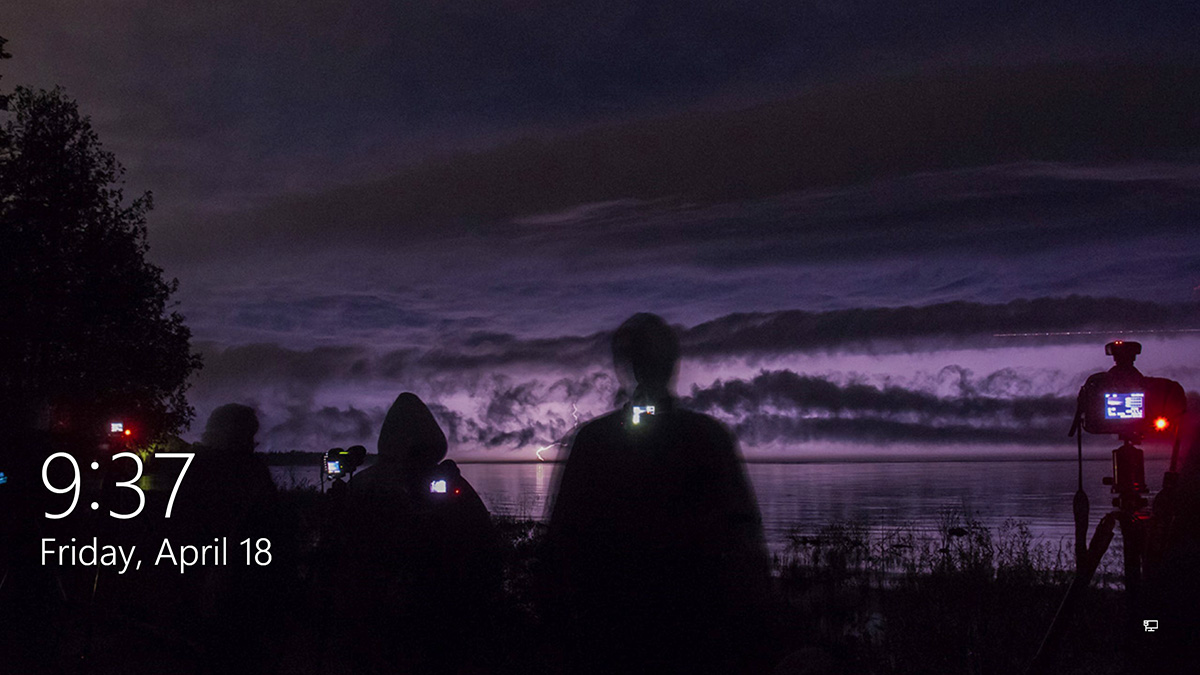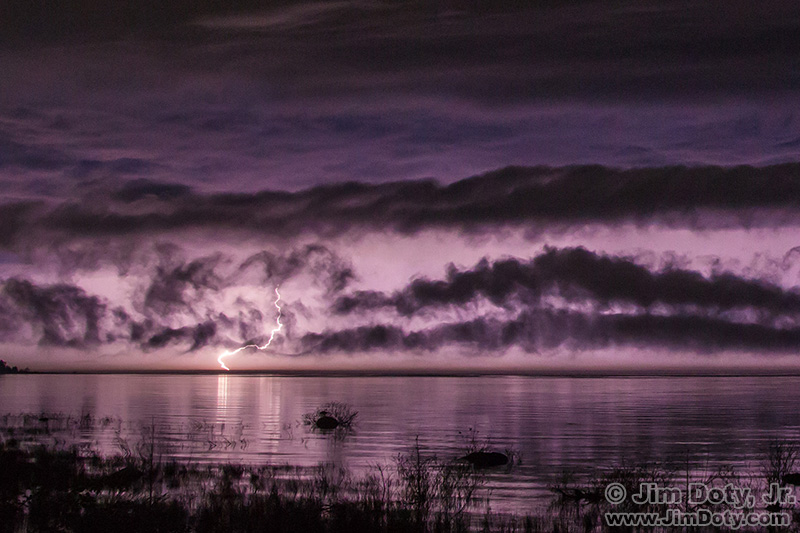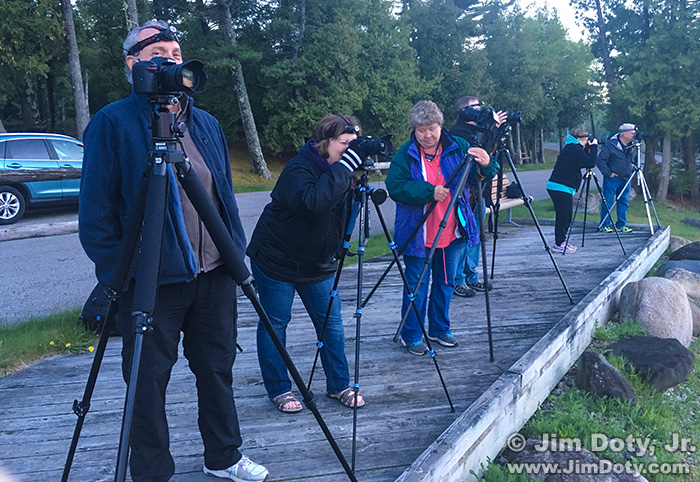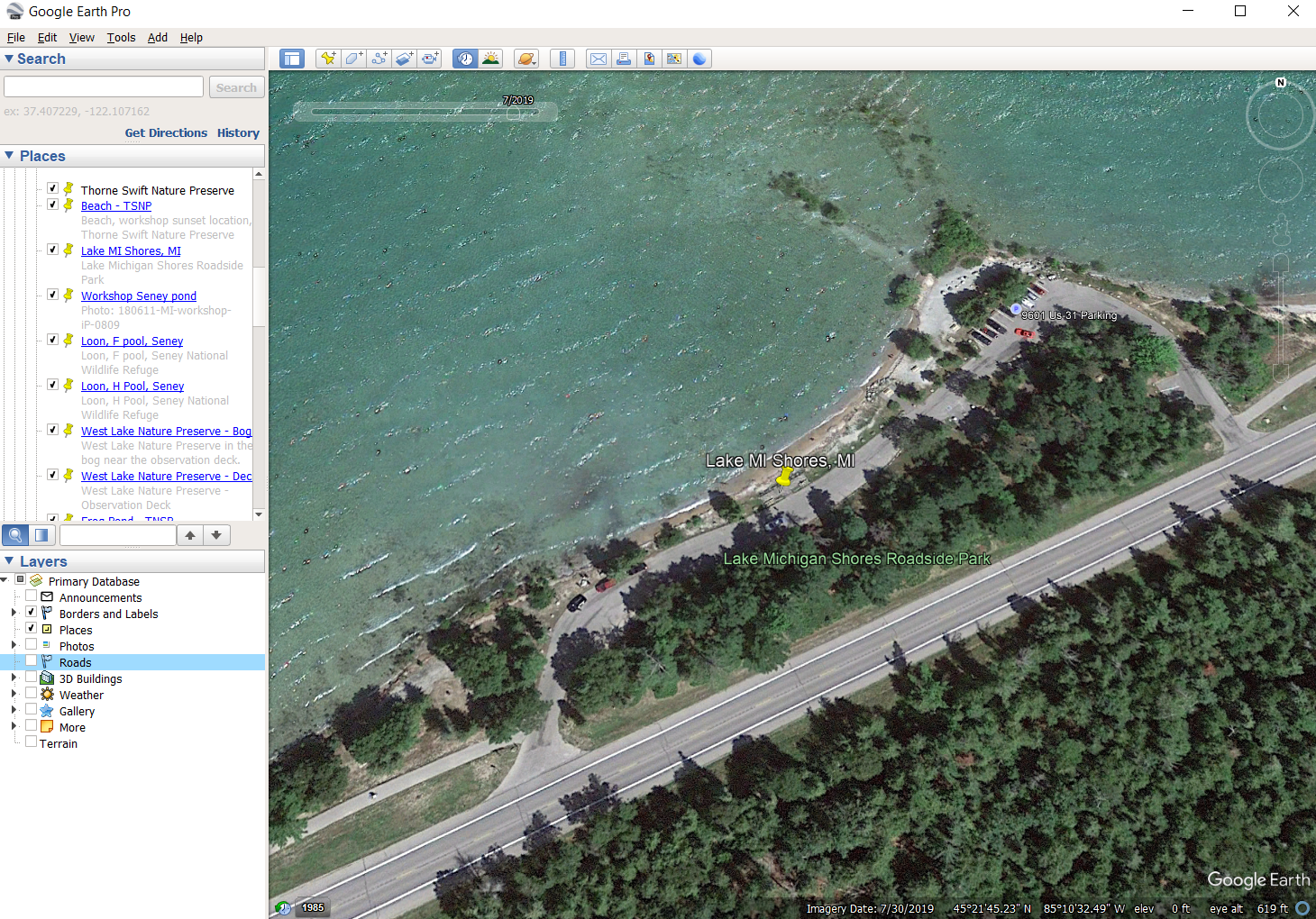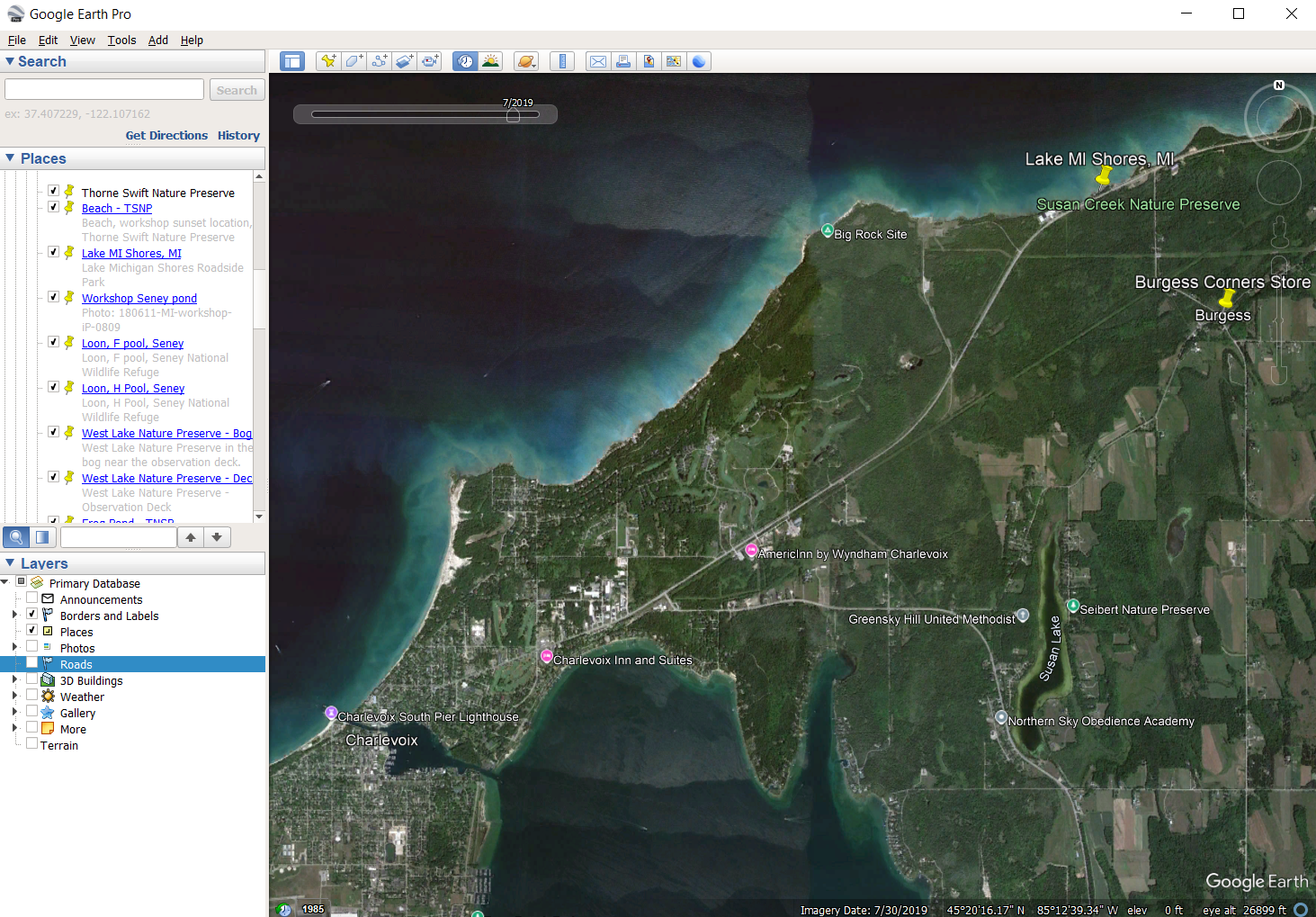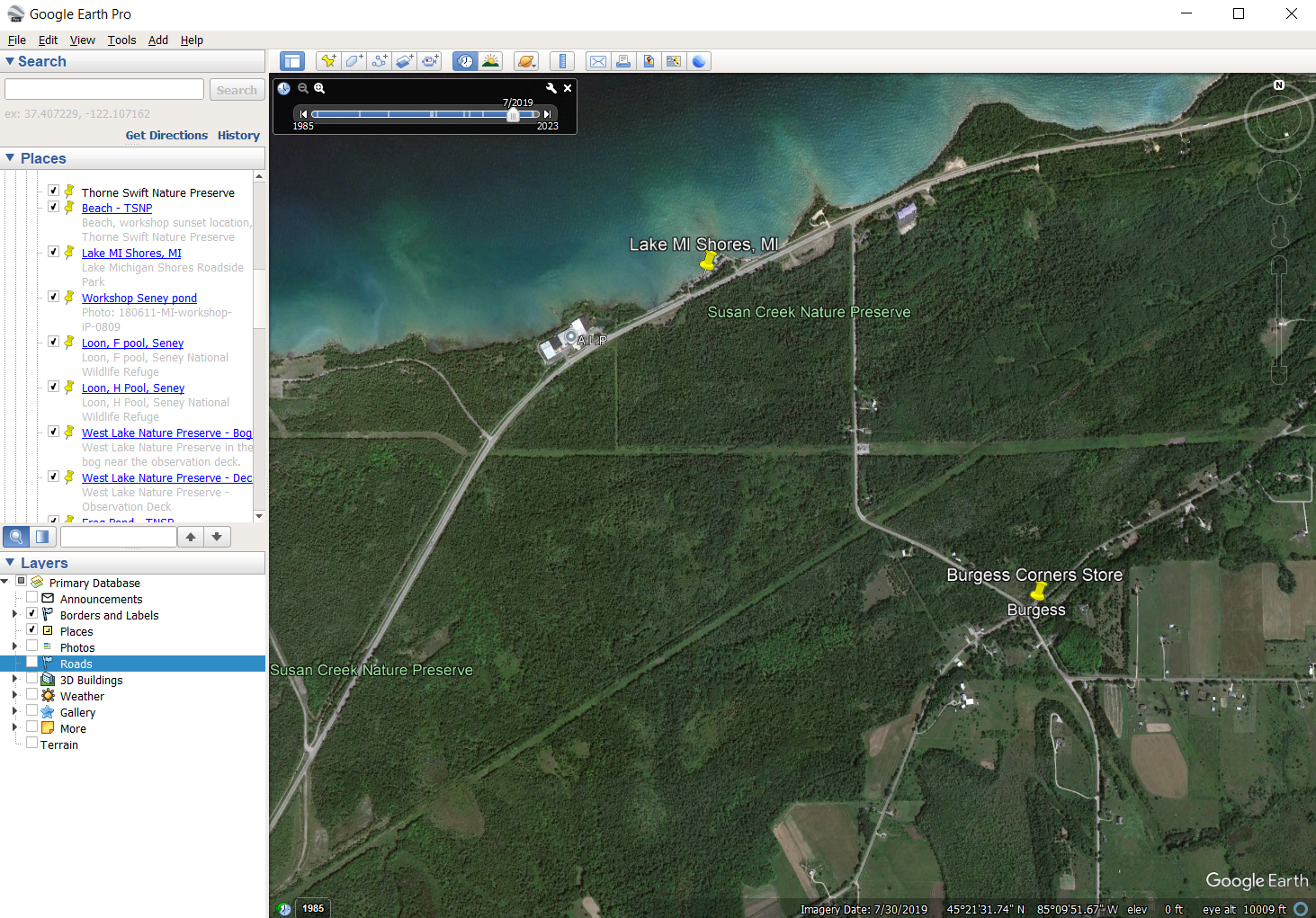I walked into the office this morning and this photo on my computer monitor greeted my eyes. This is a favorite memory and a favorite photo. Great job screen saver!
Two people moved during the long 30 second exposures. They do not have lights on their backs! My camera recorded their dark shapes, but at some point they moved just enough that my camera also recorded the LCDs on the back of their cameras.
I have two photos of this lightning bolt because I had two cameras on two tripods and both shutters were open when this bolt hit Lake Michigan. The camera on the far right in this image is my other camera. The red light in the lower right corner of the camera means the shutter is open. The little device in the hot shoe with two red lights is a GPS unit that encodes GPS coordinates on each image.
This image is the one recorded by the camera you see in the first image. These images were created on a field trip for one of my Northern Michigan photography workshops.Both photos were created May 28, 2017 at 10:41 pm.
The technique for capturing these images was simple. Focus the lens on infinity and then turn off autofocus. For these photos I set the lens aperture at f/8, the shutter speed at 30 seconds, the ISO at 4000 and just keep taking pictures, one after the other. If your lightning bolts are too bright, use a loser ISO setting.
Since I was using two cameras, I could not manually hold the shutters open on bulb which is my preferred technique. If I was using just one camera, I would set the shutter speed to bulb, open the shutter with a cable release, wait until I had captured one of more lighting strikes, and then close the shutter. The length of the exposure at night is usually unimportant. Just catch one or more lightning bolts, then close the shutter and open it again to capture some more.
Be safe! Pack up and leave (or go inside) if the lighting strikes are getting too close. Use a lightning app to see how far away the lighting is, or count the seconds between the lighting strike and the thunder. 5 seconds equals one mile. If it is less than 10 seconds between the flash and the thunder, the lightning is too close. Some lightning photographers recommend a two mile minimum distance and others say you should be at least 5 miles away from the closest strikes.
If you leave Lake Michigan Shores going east on U.S. 31 and drive south on Burgess Road you will come to Burgess Corners. There is a 1920s era country store and gas station that makes for some interesting photos. The store is usually unlocked so you can take pictures inside. See the first link below for information and photos.
Exposure Info:
The top photo with the photographers was taken with a Canon 7D Mark II and a Canon 17-40mm lens at 17 mm. The photo with just the lightning was taken with a Canon 5D Mark III and a Canon 24-105mm lens at 24mm.
The exposures with both cameras were the same, f/8, 30 Seconds, ISO 4000.
Link
.

